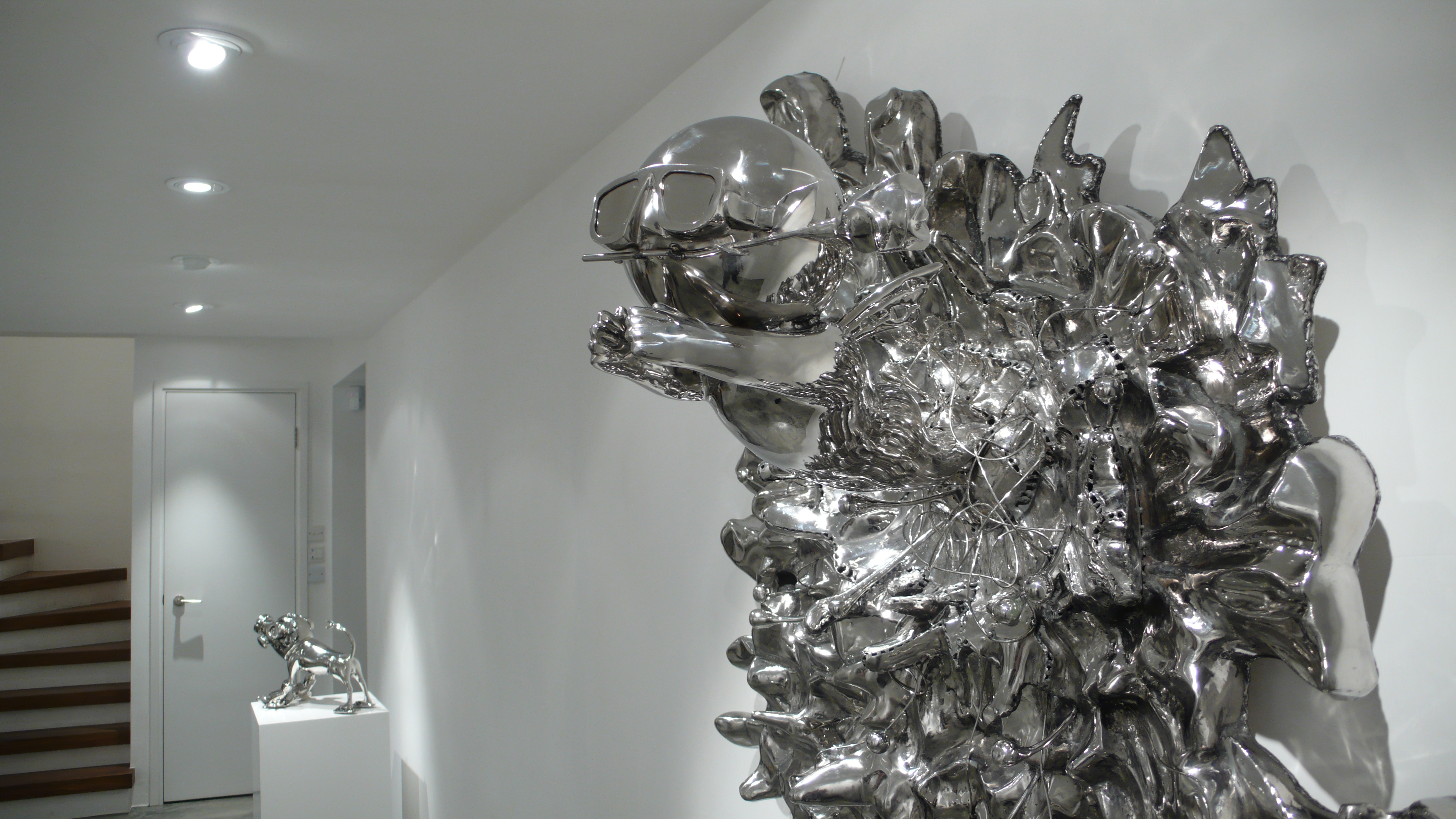
On a surface level, Liao Yibai’s steel sculptures demonstrate a fascination with light, refraction and reflection, reminiscent of a Turner painting. When one looks at the interplay with time and space there is a sense of childish abandon to his works in the gallery space. However upon closer inspection the reflection and play of light on his stainless steel angels presents a mirror image of the viewer or the environment in which it lies. They provide a reality reflected back that is a little bruised and sometimes not as beautiful. These works are not merely the product of yet another Chinese artist superficially tapping into the Zeitgeist of environmental commentary. They are a product of Yibai’s personal experiences and memories, seething with socio-political first-hand observations which make the art all the more powerful, adding a visceral dimension to his metallic creatures.Yibai himself grew up in one of China’s Third Front cities, in a chemical production factory he refers to as “Mailbox 5”, due to the lack of a fixed address to the factory.The factory itself was at the time a producer of missiles for China in the Cold War stand off against the West. Needless to say, the accident and fatality rate was high. Factory workers would one day ‘disappear’ only to be replaced by new workers. The sounds of explosions were all too familiar to him as a child, indicating that either a test had just taken place or a building had been damaged. Or an accident. A death. Years later the artist changed his name to Yibai (100) to illustrate the necessity for one hundred percent precision. Almost universally, angels are symbolic representations of purity, brightness and perfection. But Liao Yibai’s angels are not perfect. They are scorched and dented, beaten up and shattered, showered in spare parts, evoking an explosion or fire. Yibai’s battered metallic angels are an allegorical representation of the artist himself and his yearning to escape the destructive microcosm into which he was born but also the tainting of childhood and a loss of innocence. Adding insight to his experiences, he explains:-
“When I saw the wreckage flying from the explosions, I couldn’t take it. The explosions would send bolts, clamps, tongs and machine chassis flying. And what goes up must come down, and when they did, they found random places to crush. When I was little I saw a dog struck dead on the spot by a bunch of screwdrivers. This memory lives on in my sculpture language.”
His angels are a symbol of the microcosm, like Saint Exupery’s Little Prince, both child and philosopher reflecting back our damaged and dangerous world to ourselves- a world of environmental devastation and unrestrained technology. The angels, the dogs and cats are welded, scorched, battered. They are fused with hardware, transformed into a hybrid creature of our technological age. The sounds and memories of the past have informed his work, fused with imagination to create an abstract and confronting reality that raises many questions about the absurdity of the political zero sum games of the Cold War, and the absurdity of man’s desire to play God with nature and one another.